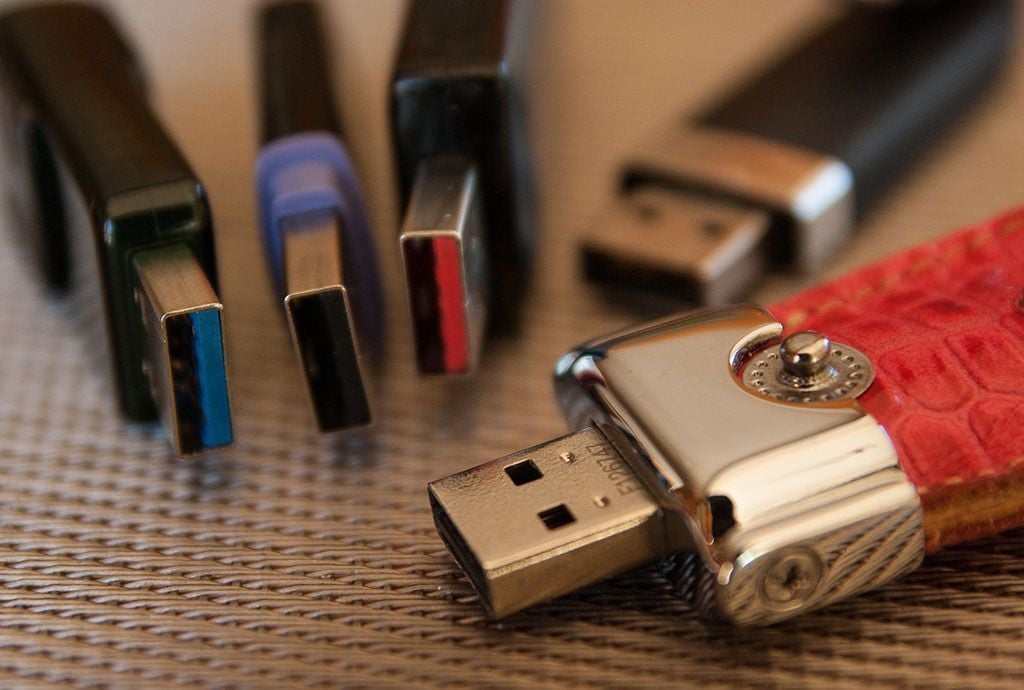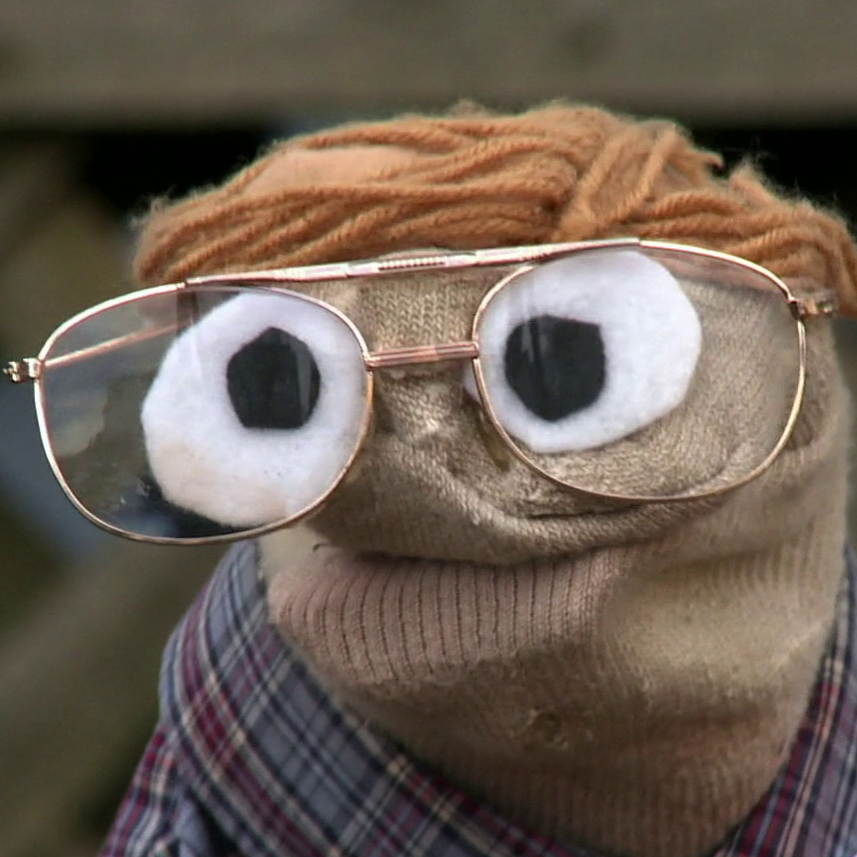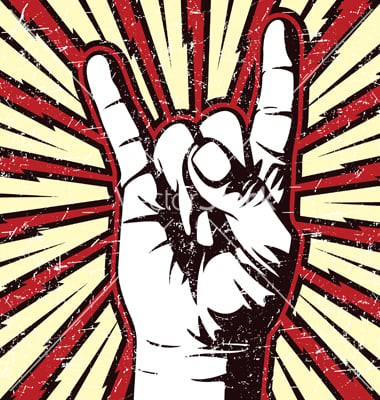TL;DR: its cheaper that way,
And i value that decision
I can bet you it’s incompetence. They failed upwards. Sure, protocol is great and universal, but connector is atrocious and it has nothing to do with cost. Few points in favor of this hypothesis:
- Plastic inside of the connector was initially black. Why chose hard to see color? Go with something easier to see;
- Connector is perfectly rectangular and only distinguishing feature they made hard to see. Don’t make ti symmetrical if it’s not reversible, basic design principle;
- Connector is perfectly rectangular making it difficult to insert. There’s a reason why most connectors have rounded corners, they are self-correcting, even TypeC does this;
- They made various different connector types but pushed for the only one with these issues. No one ever had doubts how type B or mini B or micro B go in.
Initially, the plastic inside the connector was white. They started to use black to denote USB2.0 devices, and USB2.0 rapidly became the standard. They at least tried to do something similar with blue plastic with USB3.0.
It’s basically the only example I can think of where the plug and socket are rotationally symmetrical without also being reversible. That’s the kind of thing where I ask “did you test this before you shipped it?” Thirty years later we’re still plagued by the damn thing.
Right you are. Completely forgot about that. That said, I don’t think USB1 was a standard for too long. If I remember correctly it went to 2.0 pretty fast.
Also a male USB 2 plug fits perfectly into a RJ45 slot :-/ In my days of tech support, I’ve seen multiple people plugging their USB printer cable into the network slot of their computer and it’s a perfect fit so they were always convinced they didn’t do anything wrong… That’s clearly a design flaw while all other connectors have distinct sizes.
Never heard of people plugging USB into LAN, but now that you mention it they are the same size. Luckily all the contacts are shielded.
I’ve done it myself when feeling the back of a pc and trying to get away without looking. I’ve been doing IT support since high school.
Way back before USB, joysticks had a DIN-25 connector that was identical to the
MIDInetwork connector.I blindly plugged my brand new MS Force Feedback joystick into the
MIDInetwork port behind my miditower (yes I’m that old) and watched the magic smoke rise out of the joystick. That was not a good day to learn about plugs. The network carries 50 volts or something. Stick wasn’t happy.edit: corrections! Here’s a photo of the network card: https://i.imgur.com/fBJixkM.png
My girlfriend works in IT at a school so I asked if she’s encountered this too. She said “all the time, they’re right next to each other” she also added that a lot of people put their thin charging cables into the headphone jack breaking their laptops. And that for some of them they “fit better” in that jack than the one it’s meant to go in.
No one ever had doubts how type B or mini B or micro B go in.
I agree with most of your post, but micro B is a step too far. That fucking plug was always inserted with the following procedure:
- Try to plug it in.
- Flip the side and try to plug it in again.
- Flip it again because you had the right damn side the first time.
Always, always, always.
deleted by creator
Mini B was rated for something like 10x fewer insertion cycles than micro B, the retaining tabs would give out and the connector would fall off… or worse, twist and break the socket’s inner plastic bit.
Well, if nothing else it’s easier to than type A.
Hindsight is 20/20. You’re raising every issue with the original USB plug, then proceed to highlight how they addressed these issues going forward.
You’re describing inexperience and calling it incompetence.
AFAIK the real predecessor to USB was Serial cables and those were an absolute shit show. USB set out to create a more usable interface with a lower profile and cheaper cost. In many ways the minor flaws in USB becoming common gripes is USB becoming a victim of its own success. I don’t think they originally set out to become a power charging standard so the frequency at which devices were plugged in increased over time .
At least serial cables weren’t symmetric, although just barely. AT and PS/2 cables (or any DIN) were much more of a pain for me to plug in blind.
I don’t even know that I would call it inexperience. I just think a major part of the first pass was selling the idea of USB. You can design a perfect cable, plug, and protocol, it doesn’t mean anyone will use it. Most investors don’t know much about the technical details of a product. They do, however, understand the price. If you’re trying to make a difference in the world, you don’t always get to do it with style and quality.
No one ever had doubts how type B or mini B or micro B go in.
How lucky you were to never have a device that had one of these upside-down.
Or a printer with the B connector rotated 90° to one side.
New question: why did it have rotational symmetry?
Because fuck you that’s why
New question: Fuck me? 🥺
Cheaper. Any other questions?
Oversight
EXPLAIN!

USB-A walked so USB-C could fly.
Usb-c gang
I just wish they didn’t come with chips inside our cables.
Bill gates already put chips in my vaccines
Was it doritos? I hope it was doritos.
Spicy nacho cheese baby
A chip can literally just contain basic logic gates. Your aversion to them is based on pure Qanon fiction
My aversion to them is an aversion to unnecessary overhead. A cable is a cable, it shouldn’t be a third device.
About a decade ago or so, I found myself in a reddit argument with someone that claimed they had never attempted to plug a USB in unsuccessfully. They said that every single time they’ve plugged in, it was the correct way. Some people are insane.
Perhaps a controversial opinion here, but the usefulness of reversibility is vastly overrated. It’s not a game changer, just a tiny first-world luxury that’s nice to have, but it does it by introducing a bunch of unnecessary complexity that I’d rather avoid. Not worth the trade off IMO. I can count on one hand the number of minutes USB-C has saved me by being reversible and I honestly don’t care
I’m happier with how long usb c last before they start getting finicky than I am the reversiblity.
In theory, USB-C should be better, but in practice, the quality control is all over the place.
All of my micro USB cables and ports have lasted just fine. I used one daily with my phone for 10+ years with no issues, and I’ve only had maybe two cables ever actually fail. Meanwhile, I’ve already had at least 5 USB-C cables or dongles that have fully failed, and plus the primary USB-C charging port on a laptop just completely die. I wish it was better, but it just isn’t.
Also if USB-C was just replacing just micro USB I’d be ok with that. But the problem is they’re also replacing USB-A, and Type C is not nearly as durable as Type A since it’s so small, it’s just physically impossible. I wish they made a larger version of the Type C port. Same shape, same pins, just bigger in every dimension. As large as Type A, for durability.
I’m not a big fan of Apple, but the lightning connector is just better, physically. It’s way more durable in practice since it’s just a solid piece. I wish USB-C was designed that way instead of what we actually got.
The issue is that USBC was the first standard to really take the mechanical design process seriously in a consumer context. In doing so, it was made both way more ergonomic and way more durable. I’d argue that without the focus on some of these “small but marketable” consumer-oriented bits, we would not have gotten the great overall connector design we did.
I’m not a big fan of Apple, but the lightning connector is just better, physically. It’s way more durable in practice since it’s just a solid piece. I wish USB-C was designed that way instead of what we actually got.
If I recall correctly, Lightning connectors are designed in a way that makes the port more likely to wear out. USB-C is designed in a way that makes the cable more likely to wear out. I would rather replace my $5 charging cable than replace my $150 (or more!) phone.
Yes, you’re right: that was controversial.
Engineering centric worldview versus user centric worldview.
I am just laughing here because I spent the day dealing with ancient serial tech pigtails and DB9s. You people have no idea the pain of losing multiple days of your life trying to get RS-232 to work. Especially when stuff doesn’t follow the standards it is supposed to follow.
Well if you only plugged one USB in your life you have a 50% chance of never having plugged it in wrong.
Did you burn the witch?
Yeah, that’s an easier test, you don’t need huge scales and a duck
Maybe he did it only once and worked out of luck.
That person is either a flat out liar, or they are incredibly anal and waste a lot of time looking at the connector and input every single time they connect a cable.
I don’t really have a problem looking at the connector before plugging it in. I thought this was an overblown meme.
If you can see through the two rectangular cutouts on the plug, it’s the right way around. Unfortunately, this doesn’t help if the plug is turned 90°, and also some computers have it upside down (looking at you, GPD).
I wonder how that redditor is doing now? Still batting 1.000 with USB A adapters?
If it’s on a laptop I could see it. The empty half almost always needs to be on top on the male side because the female end is almost always plastic on top.
But in practical use, people found out that even a 50/50 chance of plugging the connector in the right way is annoying enough to warrant the additional complexity of reversability, hence the development of USB Type C.
The USB-C design turned out to be much more durable and versatile (signal and power wise) in addition to reversability compared to the previous USB designs, and it is developed specifically to address the problems people found with USB-A/B/MicroUSB.
Sometimes problems only reveal themselves through real life usage, and iterative improvement through a scientific trial and error process to address these problem is how you get development progress.
For USB-A, it’s usually not even 50/50. It’s the witchcraft superposition when the first two tries don’t work.
It always works the third time, 60 percent of the time.
Yeah, people don’t take into account quantum positioning, pass-through phenomenon, or the fact that I can’t “see” when I plug it in wrong and that makes me think maybe my fingers are dumb and I missed the hole and not that I need to reverse it and try again.
First try doesn’t go in: oh I guess I have to flip it. Second try doesn’t go in, fiddle it a bunch still doesn’t go in. Fuck I had it the first time. Third try goes in immediately
I wish it was 50/50. A lot of the time it wouldn’t plug in so I flipped it. Still didn’t work so I flipped it back to the original orientation and it magically plugs in.
Can someone explain to me why I keep reading about people having problems plugging in USB A connectors upside down? I feel like I’m taking crazy pills. Per the spec, the holes always go up. They indicate the correct way to plug in the port. Not only that, but the printed logo on the connector also always goes up.
The only time this is SLIGHTLY confusing is if you have a desktop tower where the motherboard is essentially mounted sideways, but for that case it just takes an extra second to think which way is “up” from the perspective of the motherboard.
And before anyone says “who reads the spec?”, it feels like I subconsciously knew this for something like a decade before I even knew what a spec was.
Somewhat understandable, but they could’ve also done something like HDMI and DisplayPort and gone with a shape that could only plug in one way. It might not have been “as cheap as possible” but probably not as much added expense as the extra wiring and stuff. (maybe, idk shit about manufacturing)
Removed by mod
I really wish hdmi was symmetrical. (Peer behind tv, “which way goes up?” Tries to plug it in, “fml it was the other way” flips it drops it)
It’s not an issue of not being reversible. The problem is that it is symmetrical without being reversible. HDMI and DisplayPort are much less annoying. Even USB Type B (printer cables) is relatively easy to figure out orientation for.
So micro and mini usb are superior!
Mini is fine. Micro is very close to being symmetrical that it might as well be. For cables that small, reversible is the way to go.
My biggest problem with those was that mini didn’t have a strong enough friction fit and would become loose easily, and micro would wear down and break so easily. Luckily it seems that USB C has all the right qualities. It’s symmetrical but reversible, it’s durable, it clicks into place well, and it’s form works well on desktop, laptop, and mobile equally.
I actually think that a big part of the problem isn’t reversibility or symmetricality, it’s that that the ports themselves are not designed in a way that easily accepts the cable blind, and I think the best example of the way it should be is probably the SCOMP link. Or for those of that aren’t super nerds, the star wars connector that R2 uses to stop the trash compactor, amongst other things.
Look at that thing. R2 could be stumbling around drunk after a weekend droid bender and still find the target. Now, I’m not saying that it should be that large, but imagine fi the receiving port had a 1-2mm meniscus like curve that allowed you to find the target more easily, especially combined with a modern cable like USB-C. If we just look at the physical shape of the connectors, I think Lightning actually got this more correct than just about anyone else - look at a Lightning connector, and the male end has a very small curve on the sides of the connector to make it easier to actually get into the port. The female end also has a very subtle version of the thing I’m talking about.
I think a real life connector should have a slightly more prominent version of this, especially if it’s going to be the one connector for literally everything. Like, plugging into the back of a monitor or PC you can’t quite reach or TV or something should be an easy no-look operation. I’ve ton tech support for decades, and there is basically no connector that doesn’t absolutely suck shit to try to plug in if you can’t actually see it. I want to be able to throw it from across the room and still have it stick though.
For more on this topic, buy a coffee in a DT in a place that has to hold the reader out for you. Your dumb meat body is holding the card and moving slightly, the dumb meat body of the person taking the payment is moving slightly, so you end up try to jam the chip in a way that makes you both feel like you have a stack of learning disabilities. It’s just bad design.
So a headphone cable?
Honesty, kinda? There are challenges to the connector when you introduce more connections than just tip-ring-sleeve, but the general vibe of it is pretty close.
they should just go with perfectly circular, with different sizes for different applications. imagine a 20mm unit - high power/bandwidth hoses with a satisfying locking mechanism that magnetically seals the connection.
and makes the proton pack sound. and rgb fuck nevermind go back this was a bad idea
Charge your electric vehicle with USB-H (“H” for Huge)
this, but the plug in and unplug sounds should be 40db louder.
Wouldn’t fit very well into something like a smartphone though
I love circular connectors that screw onto the receptacle or have locking tabs
This is why I only buy cell phones that have BNC connectors.
MIL-DTL-38999 for everything, including
steampunkcasettefuturism phones!
You say bad idea, I say sign me up!
I get why it’s not reversible. But why the hell is it not keyed so that is obvious which orientation is correct? A small, cheap, notch would have worked wonders.
Almost all connectors in use on computers at the time USB was introduced were already keyed, and a fat lot of good it did us. Ask anyone who tried fumbling around behind a three ton CRT monitor or computer case – even with the keyed connectors, feeling for which side was up, getting anything plugged in without eyes on it was already nigh on impossible.
What the USB A connector did do which was new at the time was introduce a connector that did not have any protruding pins on either the male or female end, and thus theoretically at least could not be damaged by fucking up the insertion. Unlike any of the then-common D-Sub connectors (VGA, serial, parallel) or DIN (PS/2 mouse and keyboard, Apple serial, S-Video, etc.). USB didn’t even have the little clip to breal off like an RJ-45 Ethernet or RJ-11 phone line connector.
What the USB A connector did do which was new at the time was introduce a connector that did not have any protruding pins on either the male or female end, and thus theoretically at least could not be damaged by fucking up the insertion.
This is not true.
Some 80s computers had cassette player interfaces that practically looked like big USB connectors.
https://www.rarecomputers.com/wp-content/uploads/2019/11/back-picture-c64.jpg
My first computer. Bless you.
Some USB sticks have the logo on one side, some have it on the other…
It kinda is keyed. Seam goes down.
But does it go right or left, back or forward in other rotations?
Seam goes down, as oriented to the motherboard. If the slots are vertical, usually to the right? If you have a rare, weird machine, just remember which way it goes. FFS, there are 2 choices.
EDIT: Having said all that, not sure I’ve seen a machine that orients the seam to the left. ?
That’s true - I mean to make the keying more obvious. As it stands it’s all internal and difficult to see.
the problem is the plug is rectangular (has exterior rotational symmetry) AND not reversible - if the plugs were L shaped it would be clear by both feel and brief glance which rotation was correct
The worst thing about USB is that it always takes 3 attempts on average to get the fucker in if you don’t know the orientation of the port.
TL:DR; It was cheaper and they figured if it didn’t work you could flip it over and try again. So it’s mildly inconvenient to save a few cents on manufacturing each connector and to limited the number is conductors to 4, something it turns out was a bad idea anyway because newer USB standards use more than 4 conductors.
I learned a long time ago that it takes three licks to get to the Tootsie Roll center of a Tootsie Pop, because commercial breaks during Saturday morning cartoons told me so. Sometime later, I also learned that “three” is usually the magic number for correctly plugging in a USB Type-A device.
……what the fuck?
Edit: Guys, I get the reference to Tootsie Pop ads and that USB-A connectors are often stubborn to connect. The “wtf-ness” comes from the writer making such an oddball reference just to arrive at the number three
If you’re still confused, it’s an apparently universal experience to try to plug in a USB, feel resistance, flip it, feel much more resistance, and then realize you were correct the first time. Hence, three is the magic number.
Yeah no I get the reference
To save a penny on each connector. The USB group is ran by hardware manufacturers. They do not have innovation as a core value.
Reminds me of how we used to change the order of the wires in PC to PC connections on early RJ45 cables. What a fucking pain in the ass that was for colorblind like myself.




















